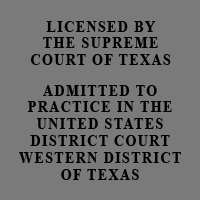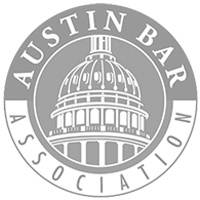Defective Crashworthiness Automobile Product Lawsuits,
Fatal Defective Airbag Lawsuits, Deadly Defective Seatbelt
Lawsuits, Defective Automobile Roof Design Lawsuits, and
Fatal Automobile Accident Rollover Lawsuits
by Defective Automobile Crash Product Liability Lawyer Jason
S. Coomer
Defective automobile product liability lawsuits include defective accelerator lawsuits, defective floor mat lawsuits, defective air bag lawsuits, defective seat belt lawsuits, defective brake lawsuits, defective tire tread lawsuits, defective roof safety design lawsuits, and defective rollover design lawsuits. A subset of the defective automobile accident lawsuits are catastrophic injury and fatal crashworthiness accident lawsuits. These lawsuits include defective vehicles with defective airbags, defective seatbelts, defective rollover design, defective roof design, defective steering column design, defective child restrain design, and other other defective safety designs that kill or increase the injuries suffered by people in the defective vehicle.
If you have lost a loved one in a fatal automobile collision or have been injured by a defective automobile including defective brakes, defective roof design, defective accelerator, defective rollover design, defective tires, or other defective crashworthiness features, feel free to submit an inquiry or send an e-mail to Texas defective crashworthiness accident lawyer Jason Coomer.
Automobile Accident Defective Crashworthiness Product Liability Lawsuits and The Crashworthiness Doctrine under Texas Law and Federal Law
Defective Automobile Accident Lawsuit Crashworthiness cases involve claims that a design defect caused or enhanced the injuries of a vehicle’s occupants during an automobile crash. To identify a crashworthiness claim, one must examine the interplay among the circumstances of the accident, the performance of the vehicle during the accident, and the injuries suffered. Such defects may cause a minor injury automobile collision to become a fatal automobile collision or cause enhanced injuries by failing to provide suitable protection from injury or death in foreseeable automobile accidents. Crashworthiness lawsuits have taken many forms, both in Texas litigation and throughout state and federal courts.
Under United States Federal the Crashworthiness Doctrine was developed in the Eighth Circuit’s opinion in Larsen v. General Motors Corp. that later helped establish that a manufacturer should be held liable for failure to provide protection to vehicle occupants in the event of an automobile collision. The decision of the United States Court of Appeals for the Eighth Circuit in Larsen v. General Motors Corporation, 391 F.2d 495 (8th Cir. 1968), is credited with saving many lives and enunciating the legal doctrine that "[w]hile automobiles are not made for the purpose of colliding with each other, a frequent and inevitable contingency of normal automobile use will result in collisions and injury-producing impacts. No rational basis exists for limiting recovery to situations where the defect in design or manufacture was the causative factor of the accident, as the accident and the resulting injury, usually caused by the so-called “second collision” of the passenger with the interior part of the automobile, all are foreseeable. Where the injuries or enhanced injuries are due to the manufacturer’s failure to use reasonable care to avoid subjecting the user of its products to an unreasonable risk of injury, general negligence principles should be applicable. The sole function of an automobile is not just to provide a means of transportation, it is to provide a means of safe transportation or as safe as is reasonably possible under the present state of the art. Id. at 502".
In Texas, the Crashworthiness Doctrine and the crashworthiness issue was initially established in Turner v. General Motors Corp., 514 S.W.2d 497 (Tex.Civ.App.—Houston [14th Dist.] 1974, writ ref'd n.r.e.). The case dealt with lawsuit in which a motorist sued General Motors and the dealer for injuries suffered when the automobile's roof collapsed in a rollover. The Texas court weighed in on the side of the injured motorist and Larsen holding that “an automobile manufacturer may be held strictly liable for a defective design which produces injuries, but not the accident.” Id. at 504. In reaching that conclusion, the Texas court rejected General Motors’s arguments that courts lacked the expertise to deal with complex issues of safety design and that allowing such suits would wreak havoc on the manufacturers’ ability to do business. Id. at 506. In General Motors Corp. v. Turner, Texas Supreme Court squarely rejected this any type of balancing test for crashworthiness cases, noting that the crashworthiness doctrine was merely a logical extension of long-articulated principles of Texas products liability law and that cases asserting the doctrine were to be charged as any design defect case. More specifically, the court stated that "there is no valid distinction in strict liability between a conscious design defect causing an accident and a conscious design defect causing an injury. By the same token, there is no rational basis for a difference in the manner of submission of the issues to be determined by the fact finder. We have not required a balancing of enumerated factors in jury submission by our previous writings, and, as stated earlier, we disapprove the ruling of the Court of Civil Appeals that such is required in a crashworthiness case." Turner v. General Motors Corp., 584 S.W.2d 844, 848 (Tex. 1979).
Texas courts have made it clear that under Texas law and the crashworthiness doctrine “a manufacturer and retailer may be held strictly liable in tort for a defectively designed automobile that enhances the injuries of the plaintiff but does not cause the accident.” Further, the defendant is liable only for “enhancement damages,” namely, that portion of the damage or injury caused by the defective design over and above the damage or injury that probably would have occurred as a result of the impact or collision absent the defective design. In Shipp v. General Motors Corp., 750 F.2d 418 (5th Cir. 1985), a roof crush case, the Fifth Circuit found no Texas law explicitly answering the question of how the enhanced damages would have to be determined, but in its examination of Texas cases the court was convinced that the plaintiff need not carry such a burden: “We are persuaded that Texas courts would conclude that it would be illogically harsh to force a plaintiff to segregate causation in crashworthiness cases, where ‘the collision, the defect, and the injury are interdependent and . . . viewed as a combined event.’” Shipp, 750 S.W.2d at 426 (quoting Turner, 584 S.W.2d at 848). According to Shipp, forcing the plaintiff “to identify in her proof the precise damages she would have sustained had the product been properly designed, would shift from proof of a producing cause of injury to sole producing cause” and would constitute a retreat from the Texas rule “that a defect need only be a ‘producing cause’ of injury and that there may be more than one such cause.” Id. at 425. Thus, according to Shipp, the producing cause issue is not modified in a crashworthiness case; as in any defect case, the plaintiff must prove that the alleged defect was a producing cause of the injuries suffered.
In General Motors Corp. v. Castaneda, 980 S.W.2d 777 (Tex.App.—San Antonio 1998, pet. denied), in an opinion authored by current Texas Supreme Court Justice Paul Green, the court approved the holding in Shipp. The court held General Motors was incorrect in its contention that the plaintiff was required to quantify with precision the degree of enhancement. Id. at 780. The court found the plaintiff’s burden was merely to show the defect was a producing cause the injury and, “if two or more causes produce a single injury, the jury may attribute the injury to any or all of the causes. . . . The burden lies with the defendants to allocate their respective responsibilities.” Id. at 781 (cites omitted). Even if it were not necessary to prove a defect enhanced an injury, it is advisable to attempt to show enhanced damages. At least one court has held that proving a defect enhanced an injury is proof the defect is one of the producing causes of injury. Coleman, 40 S.W.3d at 550.
Automobile Accident Crashworthiness Safety Belt Lawsuits, Automobile Crash Rollover Crashworthiness Lawsuits, Automobile Wreck Crashworthiness Unsafe Roof Collapse Lawsuits and Fatal Automobile Collision Crashworthiness Defective Air Bag Lawsuits (Automobile Defective Crashworthiness Product Liability Lawsuits)
Federal Motor Vehicle Safety Standards set minimum performance requirements for those vehicle parts that protect drivers and passengers from death or serious injury in the event of a crash (air bags, safety belts, child restraints, energy absorbing steering columns, motorcycle helmets). These vehicle performance requirements, defective automobile crashworthiness lawsuits, manufacturer safety policies, and the investigation efforts of the The National Highway Traffic Safety Administration are important to identify unsafe vehicles with defective airbags, defective seat belts, defective child restraints, defective roof design, defective designs that cause vehicle fires, and defective designs that cause vehicle rollovers.
Automobile Accident Crashworthiness Defective Air Bag Lawsuits and Fatal Automobile Collision Crashworthiness Defective Air Bag Lawsuits (Automobile Defective Airbag Product Liability Lawsuits)
Defective Air Bag Claims may arise out of serious automobile accidents where a defective air bag was the cause of death or a catastrophic injury. An air bag injury may result when an air bag deploys at low impact or no impact. The defective airbag will deploy at tremendous force which is necessary to protect passengers from forward momentum of a high-speed crash. However, if the air bag deploys At low speed, deployment can snap the head and neck back severely, resulting in spinal damage, brain injury and soft tissue damage. Facial lacerations and even broken bones in the face are also common. Sometimes air bags fail to deploy when they should, resulting in chest, head, face and or neck injury as the body is propelled against the dashboard, windshield or seatback.
The National Highway Traffic Safety Administration conducts investigation and research on a variety of crashworthiness issues including potentially defective airbags, defective seatbelts, defective rollover design, defective roof design, defective steering column design, defective child restrain design, and other other defective safety designs that can kill or increase the injuries suffered by people in vehicles. This work combined with fatal collision defective automobile parts lawyers and catastrophic injury automobile crash defective part lawyers helps provide important incentives to automobile manufacturers and automobile parts manufacturers to ensure production of safe vehicles.
Fatal Crash Defective Seat Belt Lawsuits, Catastrophic Injury Defective Crashworthiness Seat Belt Lawsuits, and Car Wreck Defective Seat Belt Lawsuits (Product Liability Defective Seat Belt Lawsuits)
Serious abdominal, head, neck, shoulder, facial and leg injuries are common results of seatbelt failure. The cause may be poor design of the seat latch, failure of the belt to catch when brakes are applied, poorly designed pressure points where the lap or shoulder harness cut into the body, or weakness or tears in the seat belt itself.
The National Highway Traffic Safety Administration Conducts Investigations of Defective Automobiles with Defective Airbags, Defective Tires, Defective Roof Design, Defective Accelerators, and Defective Brakes (NHTSA Automobile Defective Product Recalls)
"Approximately 42,000 lives are lost annually on our Nation’s highways. Traffic crashes are the primary cause of debilitating injuries in the United States and the number one killer of Americans under the age of 34. In addition to staggering emotional costs, the annual economic loss to society because of these crashes, in terms of worker productivity, medical costs, insurance costs, etc., is estimated at more than $150 billion. Clearly, there is a need for dramatic improvement in motor vehicle safety. Getting unsafe vehicles off the road is integral to improving safety and saving lives."
"The National Traffic and Motor Vehicle Safety Act (originally enacted in 1966 and now recodified as 49 U.S.C. Chapter 301) gives the Department of Transportation’s National Highway Traffic Safety Administration (NHTSA) the authority to issue vehicle safety standards and to require manufacturers to recall vehicles that have safety-related defects or do not meet Federal safety standards. Since then, more than 390 million cars, trucks, buses, recreational vehicles, motorcycles, and mopeds, as well as 46 million tires, 66 million pieces of motor vehicle equipment, and 42 million child safety seats have been recalled to correct safety defects."
"Manufacturers voluntarily initiate many of these recalls, while others are either influenced by NHTSA investigations or ordered by NHTSA via the courts. If a safety defect is discovered, the manufacturer must notify NHTSA, as well as vehicle or equipment owners, dealers, and distributors. The manufacturer is then required to remedy the problem at no charge to the owner. NHTSA is responsible for monitoring the manufacturer’s corrective action to ensure successful completion of the recall campaign."
The National Highway Traffic Safety Administration conducts defect investigations and administers safety recalls to support its mission to improve safety on our nation's highways. NHTSA is authorized to order manufacturers to recall and repair vehicles or items of motor vehicle equipment when investigations indicate they contain serious safety defects in their design, construction, or performance. NHTSA also monitors the adequacy of manufacturers' recall campaigns. Before initiating an investigation, NHTSA carefully reviews the body of consumer complaints and other available data to determine whether a defect trend may exist.
United States and Texas Catastrophic Injury and Fatal Accident Lawyers
As a Texas Defective Automobile Crashworthiness Fatal Accident Lawyer, Jason Coomer, works on Texas Fatal Rollover and Defective Airbag Lawsuits involving serious injuries and fatal automobile collisions all over the State of Texas and throughout the United States. In working on Texas Fatal Automobile Crash Law Suits, Jason Coomer commonly works with other Texas Fatal Defective Crashworthiness Rollover Accident Lawyers throughout Texas and the United States including Houston Fatal Defective Airbag Accident Lawyers, Dallas Fatal Defective Roof Collapse Rollover Lawyers, El Paso Defective Safety Restrain Fatal Accident Lawyers, and San Antonio Defective Safety Design Serious Burn and Death Accident Lawyers.
In working with other Defective Crashworthiness Automobile Accident Lawyers, he is able to more efficiently investigate and litigate catastrophic injury and fatal automobile crash and deadly car wreck lawsuits that are caused by defective automobile design or parts.
Texas Defective Crashworthiness Automobile lawyer, Jason S. Coomer, helps individuals that have been seriously injured and the families of people that have been killed as a result of defective air bags, defective rollover design, defective roof design, defective safety restraint design, defective steering column design, or other a defective crashworthiness automobile design or part. If you have a question about a defective air bag or defective automobile claims, contact Austin Texas Defective Automobile Crashworthiness Fatal Accident lawyer Jason Coomer.
Feel Free to Contact Us with any Questions
Associations




